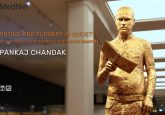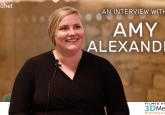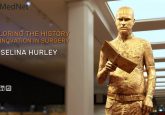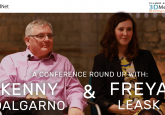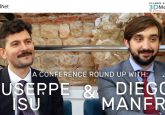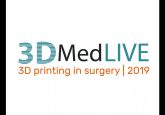Approaching reconstructive surgery with 3D technologies
In this interview, Adrian Sugar (Centre for Applied Reconstructive Technologies in Surgery, UK) describes his experience using 3D technologies, including virtual modeling and 3D printing, as tools for preparing for reconstructive surgeries.
Register as a member of 3DMedNet for exclusive 3DMedLIVE content
Biography
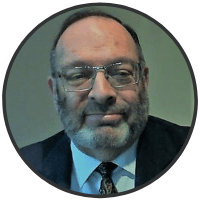 Adrian Sugar is Hon. Consultant Cleft and Maxillofacial Surgeon at Morriston Hospital and Honorary Senior Clinical Lecturer at Swansea University Medical School (both Swansea, UK). He is Chair of the Centre for Applied Reconstructive Technologies in Surgery (CARTIS; Swansea, UK) a collaboration between the Maxillofacial Unit of Morriston Hospital, Swansea Bay University Health Board and the National Centre for Product Design and Research at Cardiff Metropolitan University (UK). Dr Sugar’s main interests are in craniofacial deformity and trauma, craniofacial and oral implants and training in cranio-maxillofacial surgery. His specialist interests include cleft surgery, hemifacial microsomia, distraction osteogenesis, 3D imaging/planning and clinical research. Dr Sugar started his consultant career in St Lawrence Hospital (Chepstow, UK) transferring to Morriston Hospital with his Burns and Plastic Surgery colleagues in 1994. He was Clinical Director of the Welsh Centre for Cleft Lip and Palate for 11 years, chaired the health board’s Paediatric Surgery Committee and Morriston Hospital’s Senior Medical Staff Committee, and was Training Programme Director for OMFS in Wales. He worked along with many others to develop the new out-patient and educational facilities at Morriston. Dr Sugar established the first service in the UK for the replacement of facial body parts like ears, noses and eyes using titanium screw implants in 1987 and in 1994 carried out the first case in the UK of lengthening of the facial bones by distraction osteogenesis. He sat on the RCS (Eng) Commission looking at the impact of new technologies on the future of Surgery. He brought to this project his and his colleagues’ experience, research, publications and enthusiasm in the field of 3D planning and printing.
Adrian Sugar is Hon. Consultant Cleft and Maxillofacial Surgeon at Morriston Hospital and Honorary Senior Clinical Lecturer at Swansea University Medical School (both Swansea, UK). He is Chair of the Centre for Applied Reconstructive Technologies in Surgery (CARTIS; Swansea, UK) a collaboration between the Maxillofacial Unit of Morriston Hospital, Swansea Bay University Health Board and the National Centre for Product Design and Research at Cardiff Metropolitan University (UK). Dr Sugar’s main interests are in craniofacial deformity and trauma, craniofacial and oral implants and training in cranio-maxillofacial surgery. His specialist interests include cleft surgery, hemifacial microsomia, distraction osteogenesis, 3D imaging/planning and clinical research. Dr Sugar started his consultant career in St Lawrence Hospital (Chepstow, UK) transferring to Morriston Hospital with his Burns and Plastic Surgery colleagues in 1994. He was Clinical Director of the Welsh Centre for Cleft Lip and Palate for 11 years, chaired the health board’s Paediatric Surgery Committee and Morriston Hospital’s Senior Medical Staff Committee, and was Training Programme Director for OMFS in Wales. He worked along with many others to develop the new out-patient and educational facilities at Morriston. Dr Sugar established the first service in the UK for the replacement of facial body parts like ears, noses and eyes using titanium screw implants in 1987 and in 1994 carried out the first case in the UK of lengthening of the facial bones by distraction osteogenesis. He sat on the RCS (Eng) Commission looking at the impact of new technologies on the future of Surgery. He brought to this project his and his colleagues’ experience, research, publications and enthusiasm in the field of 3D planning and printing.
“We discovered that if we manipulated those images on screen, we could cut them down to areas of interest. So for example, if we were going to work on the orbit, what was the point of having the rest of the cranial facial skeleton? If we were only working on the face, why did we need the back of the head? If we cut down those virtual models on screen to 50% of the size of the original image, that was also going to be 50% of the cost when we ordered a 3D model.”
Dr Sugar was interviewed at 3DMedLIVE 2019: 3D printing in surgery. To access more exclusive interviews and content from 3DMedLIVE 2019, watch this space on 3DMedNet >>
>> Find out more about 3DMedLIVE
Interview segments:
- Introduction [00:00]
- 3D printing for reconstructive surgery [00:16]
- Using virtual 3D modelling [01:13]
- The future of 3D printing in surgery [02:44]
You may also be interested in:
- The future of surgery: 3D printing, genomics and personalized care
- 3D printing for trauma surgery
- Clinical engineering and innovative technologies for surgery
- Surgical planning with patient-specific 3D-printed medical models
The opinions expressed in this feature are those of the interviewee and do not necessarily reflect the views of 3DMedNet or Future Science Group.
